
Japan 2024 Ride Report : What’s Good On Paper…
left for contents
I just went on my second motorcycle trip in Japan, and let’s just say I’ll do it differently next time.
Let me explain: Japan has a lot going for it in terms of travel and motorcycles, but you need to know what you’re getting in to as well. I just spent five days riding around Kyoto on a Yamaha XSR700 – here’s what I learned through that trip.
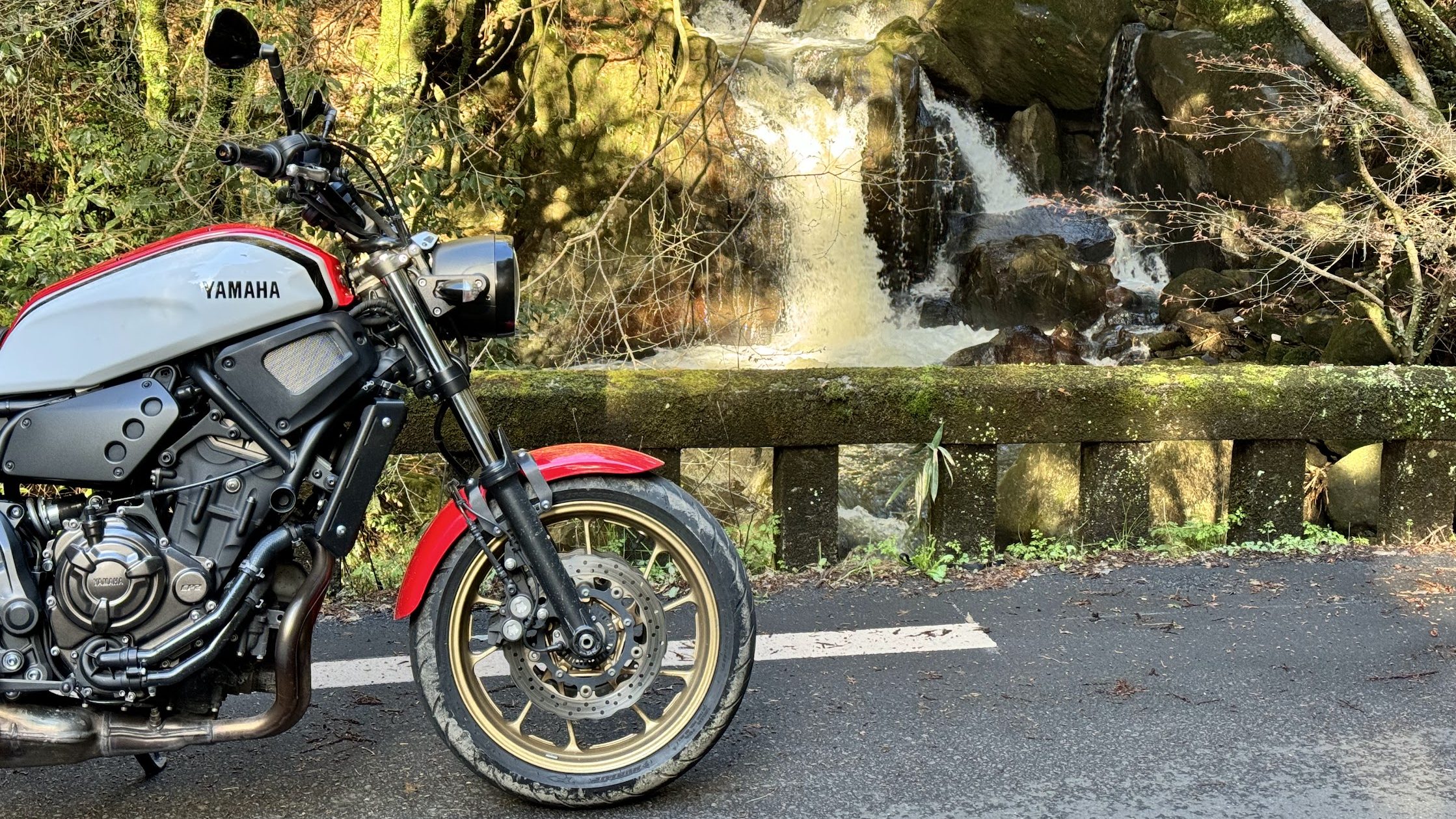
I’ll start with quick pros and cons on riding in Japan from my perspective. Then I’ll add more detail to each point and finally give you a day-by-day rundown of my trip, conditions, etc. I’ll also give you a full report of my costs on this ride, including motorcycle rental, fuel, hotels and more. And finally I’ll give you a few tips and requirements for riding in Japan (like paperwork you absolutely need!)
Pros and Cons to Riding in Japan
Pros
- Endless twisty and well-maintained roads: The entire country is basically mountains, but it’s also insanely well developed and maintained meaning sticky tarmac and plenty of warning for any sharp turns or surprises ahead.
- Beautiful small towns: Riding a motorcycle through Japan will take you to many tiny small towns with incredible restaurants, friendly people, and relaxing onsens (the perfect stop on a motorcycle ride – more on these below).
- Very safe, generally: Aside from the drivers (which I’ll get to), Japan is an insanely safe place. This makes for a more comfortable touring experience all around.
- Very safe drivers: After a day or two they become very predictable. I didn’t see a single car overtake another in the city or countryside.
Cons
- Slow speed limits: Comically low. Think 25mph on a windy mountain road that can be casually ridden at double that. However, it seems that they’re not really respected. Many cars go 150% the speed limit.
- Narrow roads: Japan is a very dense country, and even the roads reflect this. Sometimes there is no room to pass a slow vehicle, and it can be difficult to filter up even at stoplights.
- Very safe drivers… Coming from Thailand, the drivers in Japan are irritatingly safe. I’ll explain below.
Pro #1: Incredible Roads
Japan is basically a thin island chain forced up from the sea by the gnashing of tectonic plates, creating jutting coastlines and towering mountains across almost the entire country. There is no shortage of twisty roads and nice viewpoints.
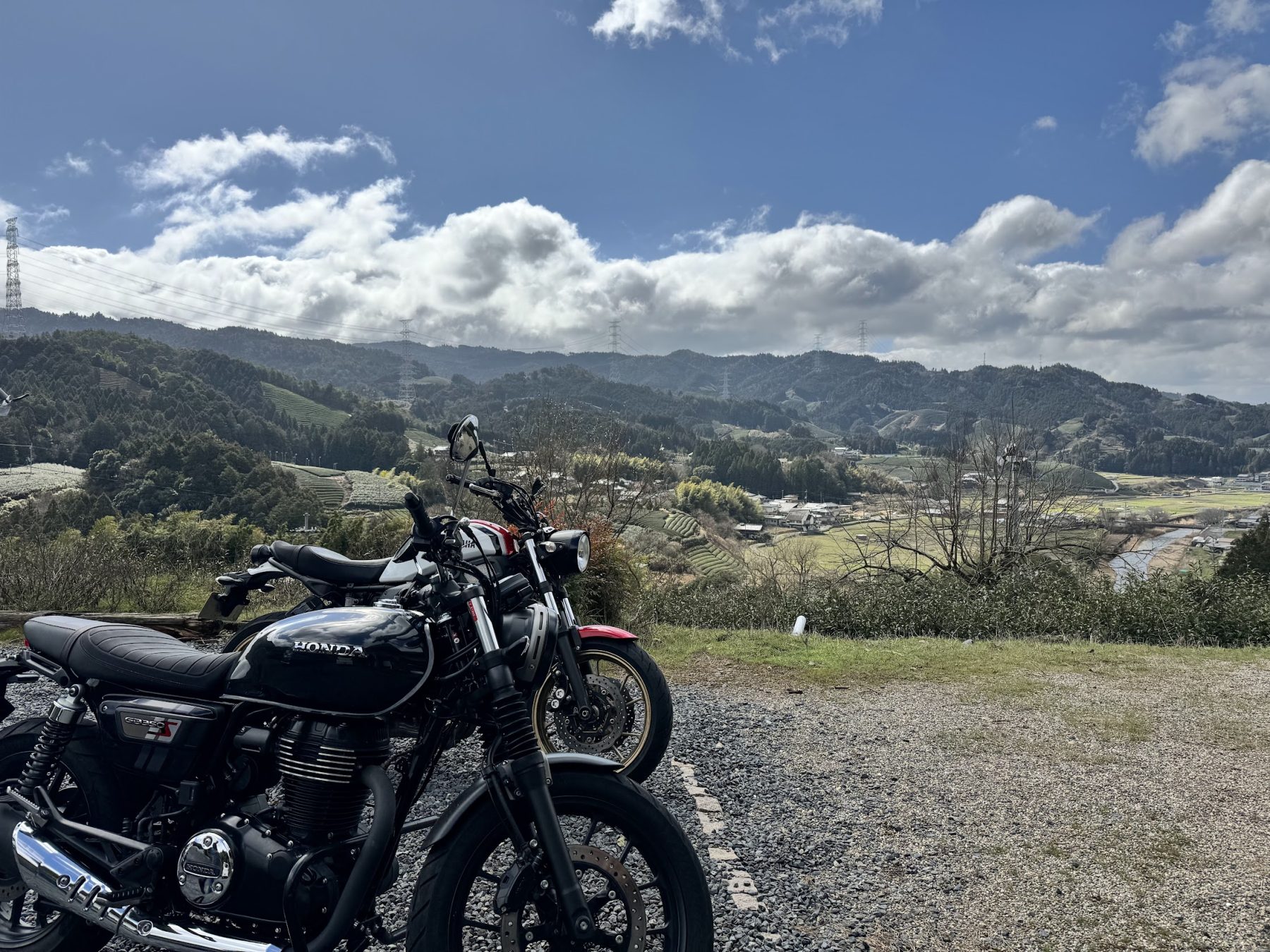
But it’s not just that the roads are twisty; it’s also the attention to detail in Japanese culture that makes riding here so nice. Roads are built with care here: I rode through rain on slick street tires on multiple days and never once felt the slightest loss of traction (until I took the bike off road!)
Signage is also detailed; every sharp corner has multiple indications from the road surface to eye-level signs. And the paint they used on the road seems to be much sticker than what I’ve ridden on elsewhere in the world.
I felt like I could focus on enjoying the ride and the scenery instead of dodging potholes and braking hard in to unexpected tight turns.
Pro #2: Beautiful Small Towns
Japan is known for its dense metropolises: Tokyo, Osaka, Nagoya. These are 24/7 entertainment factories with massive shopping districts, any food you can imagine, and mass transit zooming everywhere. And car meets every night.

The small towns of Japan are unfortunately often forgotten. Young Japanese are flocking to the cities, leaving some small towns with homes for sale at jaw-droppingly low prices.
But in my experience, these small towns and cities have some of the most incredible food, people, and cultural treasures in the country. The best meals I’ve ever had, the best onsens I’ve ever visited; they’re all in small towns in Japan.
Take the towns dotting the coast of the Izu peninsula (which I road around in 2019) for example. The best unagi I’ve ever had (eel over rice dish) was here, and the most scenic onsen I’ve been to was here (which isn’t even accessible by train).
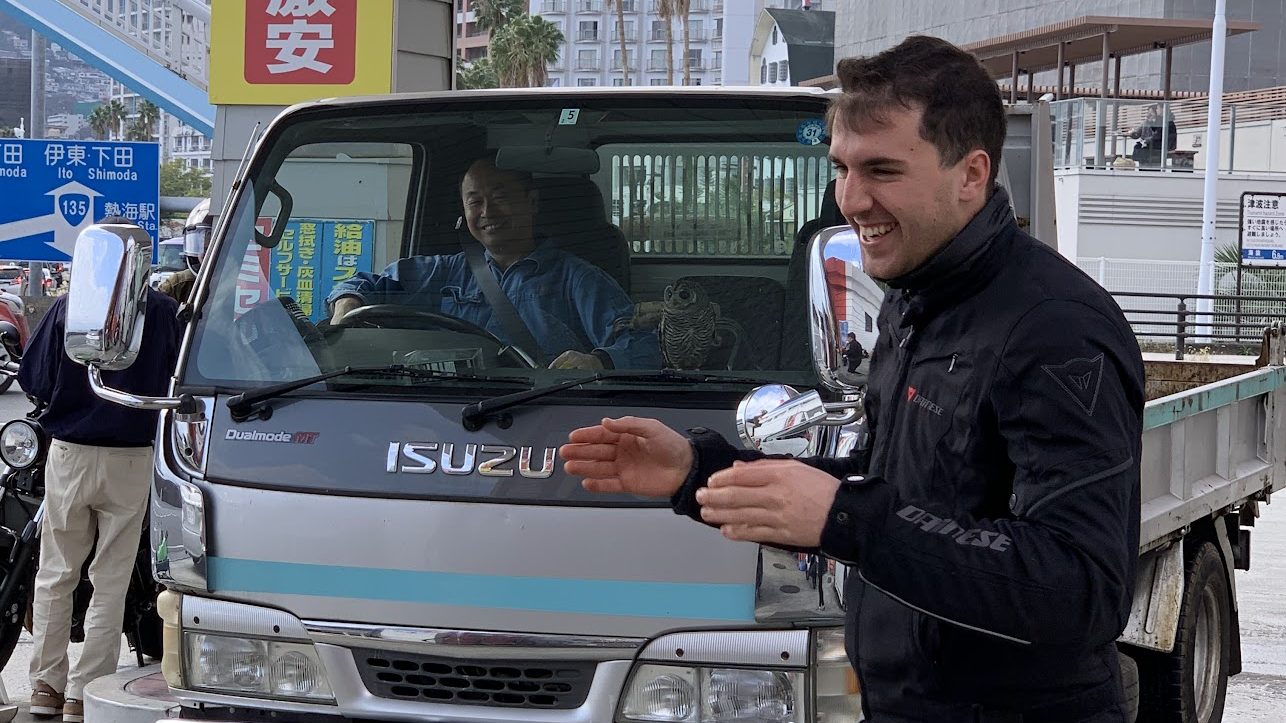
And on this most recent ride in the Kyoto area, I met a 25th generation chasen (matcha whisk) master here thanks to the freedom riding a motorcycle gave me.
And by the way: the onsen is a traditional Japanese bathhouse. You’ll find them all over the country, usually charging just around $5 for entry with towel and locker rental included. Many will have multiple hot baths, a cold tub, sauna, and steam room. Many serve food as well. The onsen is the perfect way to relax the body after a long ride (or in the middle of a long day!)
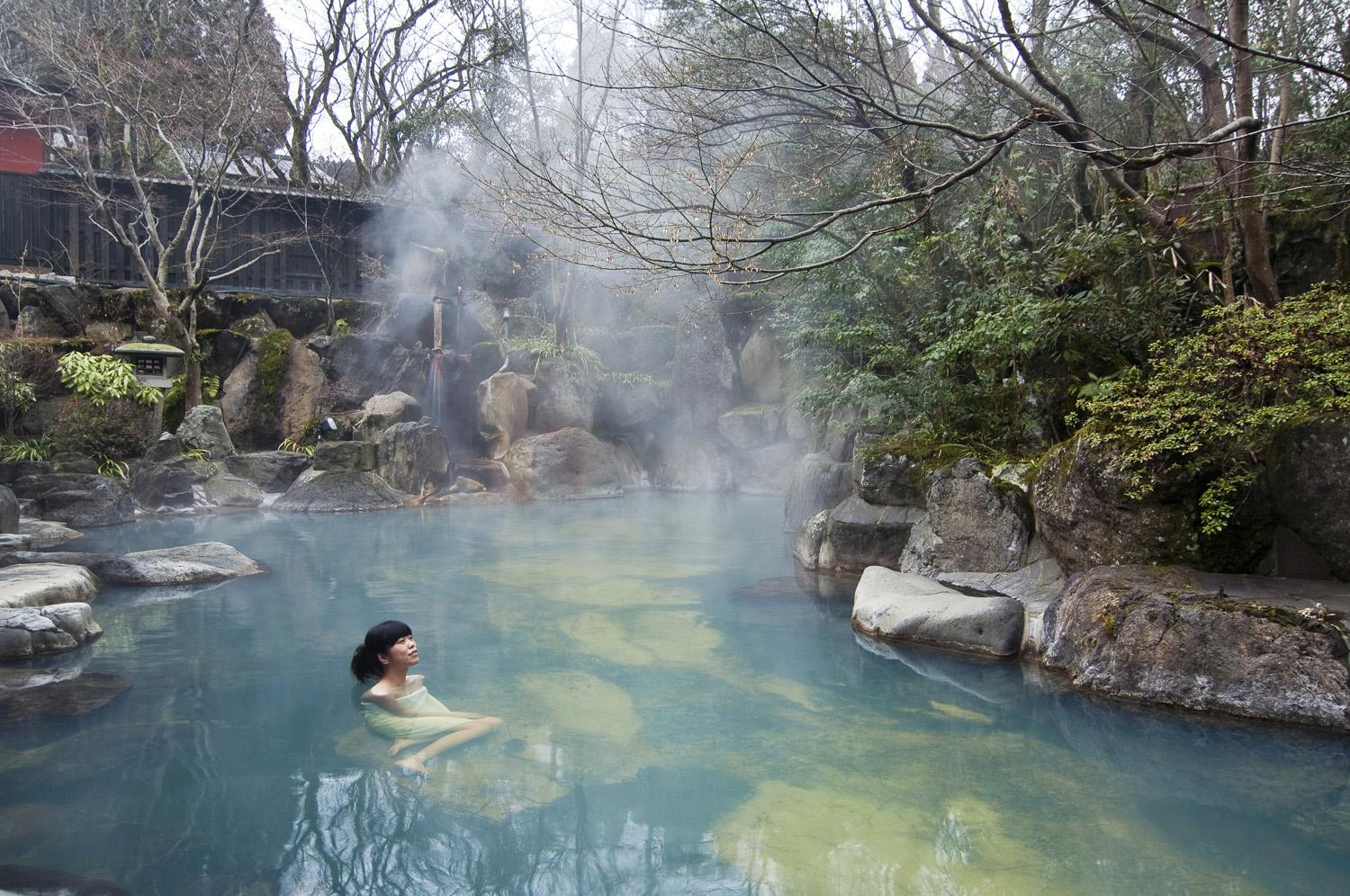
Pro #3: Very Safe, Generally
Japan is probably the safest country I’ve ever visited. It’s hard to imagine for many of us today, unfortunately, but both violent crime and theft in Japan is almost nonexistent. I never worried about leaving my helmet and gear on the bike, having my bag snatched while I was in the bathroom, or walking down dark side streets late at night.
This is one of those benefits you don’t really appreciate until you’re immersed in it for some time. My experience moving from New York City to Thailand, which is similarly safe, gave me an appreciation for how relaxing this general safety makes a vacation and riding experience.
Don’t underestimate this.
Now let me explain the cons before I get to the mixed review: safe drivers.
Con #1: Slow Speed Limits
Japan has some of the slowest speed limits I’ve ever seen. On beautiful twisty mountain roads I’d see 40 or 50 kilometers per hour as the posted speed limit. That’s 25-30mph.
My grandma’s powerchair can go faster than that.
That said, many of the cars in Japan are basically covered powerchairs… called kei cars, they are the smallest category of expressway-legal vehicles in Japan, and they’re almost exclusive to this country. They are subject to lower tax than bigger vehicles too. It seems regulations have created a type of refrigerator-on-wheels machine perfectly suited to Japan’s legal environment.
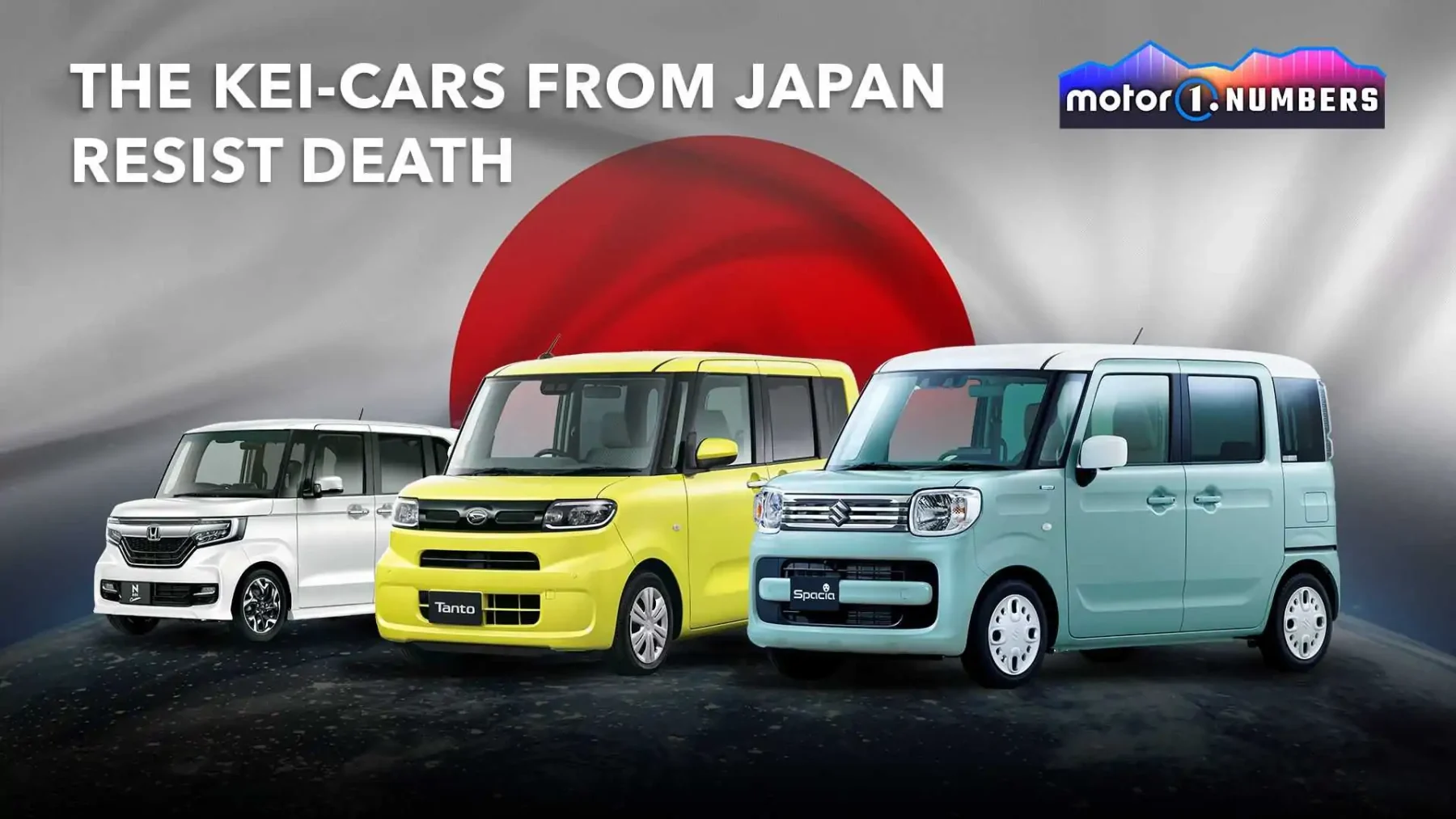
The upside to the speed limits is that they don’t seem to be respected. Even kei cars are often doing 60-70 kph, and nobody seems to mind.
Let’s just say I pushed my Yamaha XSR700 quite hard and didn’t have any issues with the law.
If you do want to play strictly by the rules, however, I think you’re better off renting a low-CC bike and planning to enjoy the scenery rather than speed.
Con #2: Narrow Roads
Now slow speeds wouldn’t bother me so much if it was easier to pass, but this is the other con of riding in Japan. Many roads in Japan, even large bypass roads, are very narrow with almost no shoulder. This was irritating for passing but also sketchy for safety.
One road I took along the Lake Biwa in Shiga Prefecture actually had orange poles all along the centerline and walls on the shoulder – with about 2 feet for the shoulder. Zero chance of passing anyone on that road.
Ironically some of the more remote roads which appear smaller on Google Maps had the widest roadway and longer passing zones. Now you know.
Pro and Con: Very Safe Drivers
At last we’re at my conflicted point: the drivers of Japan.
Objectively, I have to note that drivers in Japan in my experience are very safe and predictable. I found that they drive slowly, are deliberate with their actions, and considerate to boot.

Maybe it’s just that I’m used to Thailand’s wild roads, but I found Japanese drivers jarring at times. Late signaling is one big example – sometimes I’d be following perhaps too close and have to slam the brakes when the car in front of me suddenly slows almost to a stop in order to turn left, flicking on their signal when they’re halfway through the turn.
I also found this problematic when filtering up at stoplights; it didn’t seem like drivers were aware of me. This is similar to riding in the USA, but in Thailand I feel like drivers are (on the whole) more alert.
Maybe it is a case of where there are rules, when someone breaks them all hell breaks loose. Where there are no rules, everyone is always expecting the unexpected.
That’s it for my pros and cons… here’s a rundown of my trip.
Day by Day Riding in Japan
For this trip, I rode a Yamaha XSR700 and based out of Otsu, which is on Lake Biwa just east of Kyoto. I rented the bike from the Rental819 branch in Kyoto near the Jujo stop (here).
I’ve rented from this company twice now (last time was in Tokyo) and have nothing but good things to say: their bikes are well maintained, they are quick and efficient at getting you on the road, and even their rental gear (helmets, jackets, etc) is in good condition.

I rode a total of 5 days in and around the Kyoto area on this bike, often with a passenger on the back. She did not like the XSR rear seat, for what it’s worth!
For gear, I rented a helmet from Rental819 but wore a set of Bowtex Elite pants and shirt generously given to me by a friend. That allowed me to layer my favorite jeans and winter jackets over so I could ride comfortably in what turned out to be an unfortunately cold and wet week of riding. The Bowtex top/jacket has a zipper so it was easy to ditch when we stopped for a break, but I left the leggings on underneath my jeans while we had lunch or took short walks off the bike. I barely noticed they were there.
Side note: I also wear the Bowtex set in Thailand where it’s regularly 100+ F (40 C) and find that it’s hot while sitting, but as soon as you’re moving I forget I’m even wearing it. I’ll usually layer the Bowtex leggings over a pair of gym shorts so I can quickly strip down at a stop and go with shorts.
I also wore Alpinestars SMX-1 Air V2 gloves with glove liners underneath for warmth and TCX R04D WP boots. The gloves were not enough, even with liners – they’re perfect for Thailand’s heat though. The TCX boots were perfect – warm enough, waterproof, and insanely comfortable even when I walked 10,000 steps in them. I’ve had running shoes that are less comfortable than these.
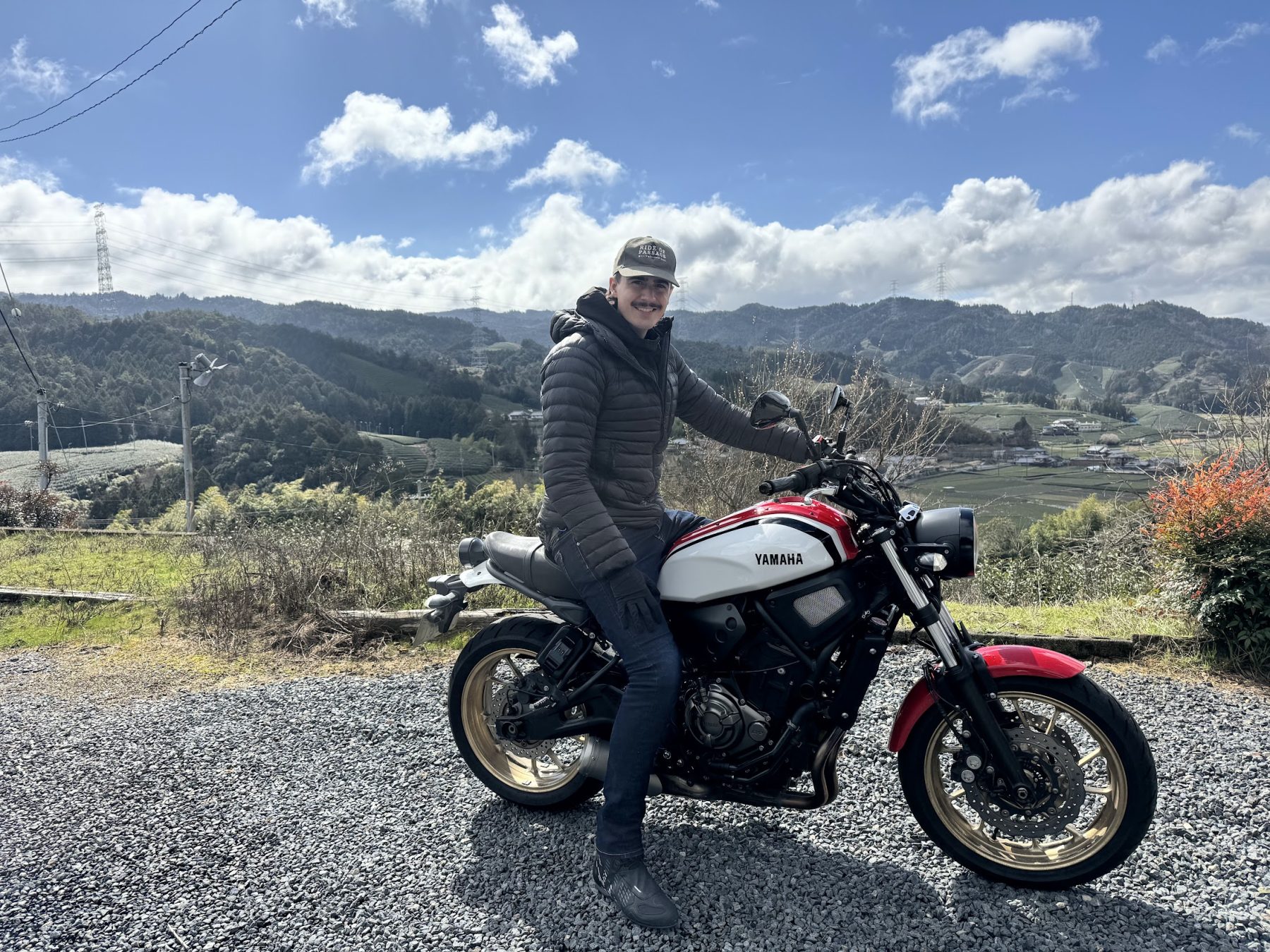
Day 1: Looping Lake Biwa
I wanted to ride a full loop of Lake Biwa, but given a late start due to morning rain and frigid temperatures, I was only able to do a short loop over the Biwako bridge and up north to a nice onsen. Here’s the full route.
Day 2: Wazuka Tea Fields
Day 2 was dedicated to helping a friend shoot content for his tea brand Motorcycle Matcha, so we met in Wazuka and rode some small mountain roads together. I tore down towards a zoo and then we met up again at a nice onsen. Here’s as much of the route as I remember.
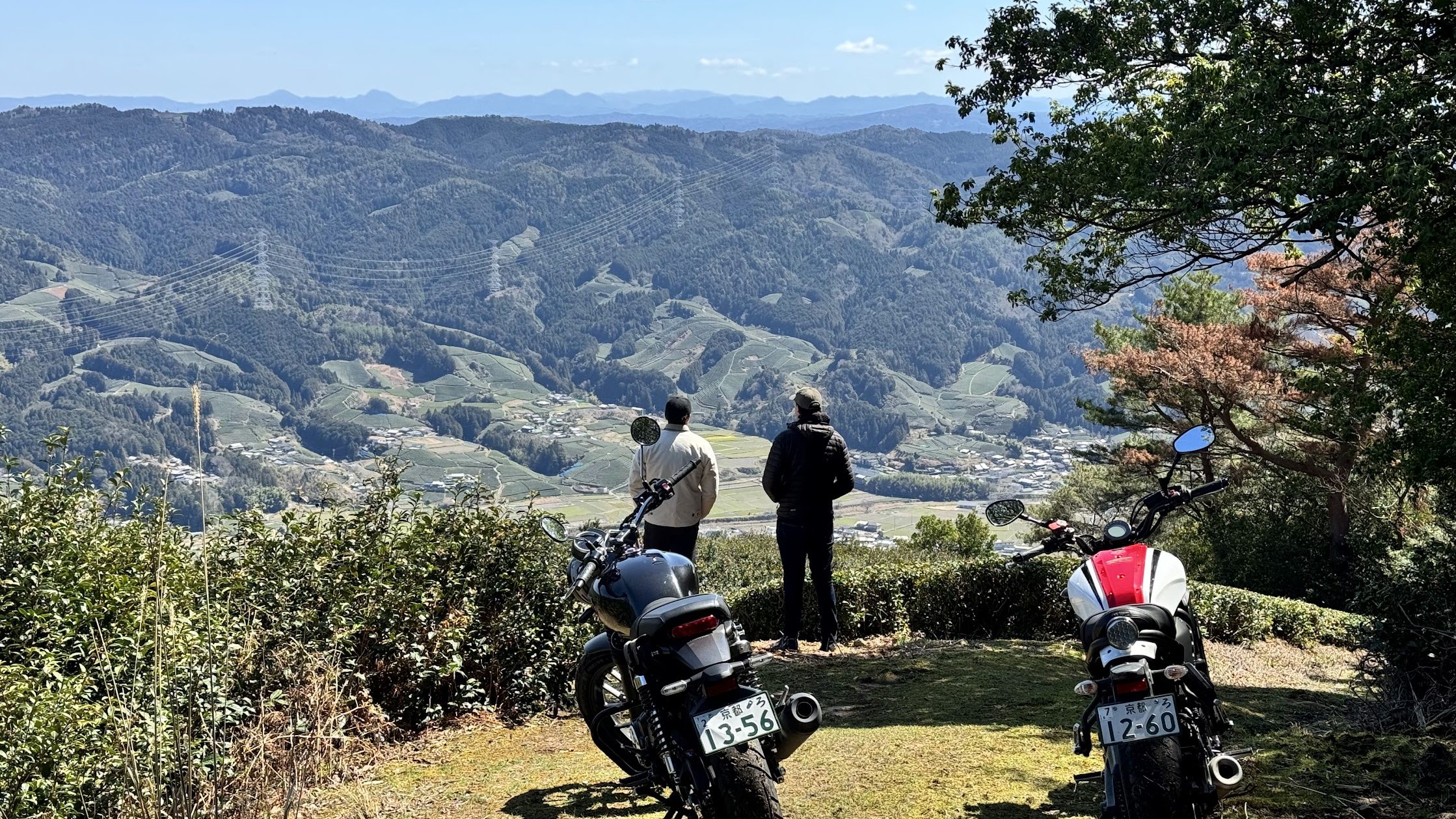
These were some of the nicest roads of the trip – very little traffic, amazing scenery and plenty of good stopping points. The onsen was also the perfect way to end the day of riding.
Day 3: More Tea
Day 3 also went through the Wazuka area and a bit of the more suburban outskirts between Kyoto and Osaka. Here’s the full route.
We began by riding along the Seta and Uji rivers to the small town of Uji, which is known for matcha tea production and cafes. Beautiful and bustling town, if a bit touristy given the rising popularity of matcha and the accessibility by train from Kyoto.
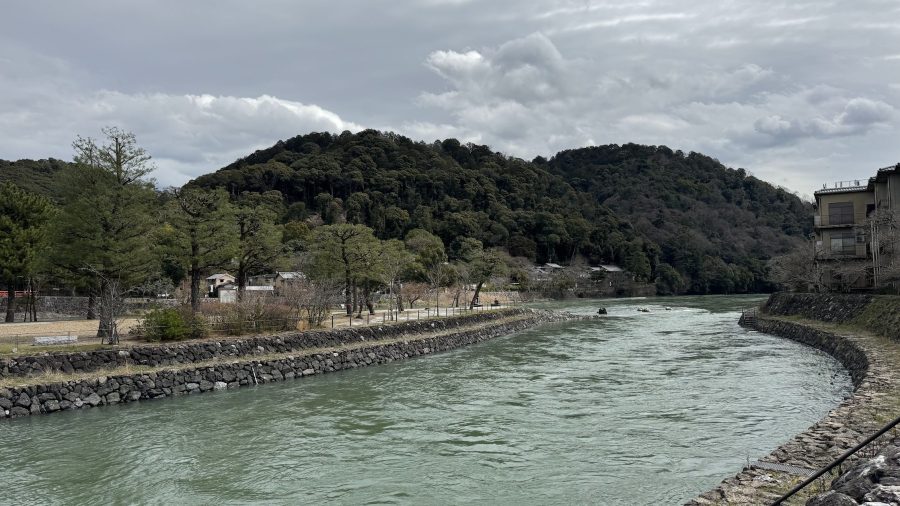
Then went to look for cherry blossoms (sakura) – we were too early – and finally down to meet a chasen (matcha whisk) master and learn about his craft and heritage.
Very cool workshop – he only takes ~2 groups per week so a huge thank you to Gaston of Motorcycle Matcha for allowing me to join.
The road along the Seta/Uji river is fantastic – I highly recommend taking it if you’re near Kyoto. Nothing else today was particularly inspiring.
Day 4: Finally a Long Ride
On Day 4 temperatures finally started to warm up enough that my fingers weren’t turning to icicles after a half hour on the road, so we went for a long one up to the coast north of Kyoto. I have one road from today I’ll never ride again, and one road I will absolutely go back to. Here’s the full route.
The road I took up to the Metasequoia trees was awful – I thought it would be a big road allowing me to pass and enjoy the power of the XSR700, but instead it was a largely elevated, walled-in 2 lane with divider down the middle. I was stuck behind a truck going 50mph most of the way.
However, once I got past Tsuruga the roads opened up quite a lot. The stop at Rainbow Line was very nice, incredibly scenic. They even built an onsen foot bath up there.

Then the ride back down to Seta on Route 367… I will be back to ride this road. Carving through pine forests, very little traffic despite a busy weekend in cherry blossom season. Excellent.
Day 5: Meeting Riders and the Legendary Route 421
The final day of riding was an absolute banger to say the least. I took the interstate from Seta to Kuwana, outside the city of Nagoya to meet with someone from the Gaijinriders Facebook group, a large group of foreign riders based in Japan. Thank you for meeting with me, David! I look forward to riding with you in Japan soon!
I took this route back to Kyoto to return the bike – it was a thrill.
I wanted to ride either the Kurakake pass (Route 306) or Suzuka Skyline (Route 477) as both are legendary motorcycling roads in Japan. However, Google Maps kept routing me around them and I’m pretty sure it’s because they’re closed for the winter, which unfortunately included March 30th (winter ends April 1!).
I had to settle for Route 421, which is south of 306 and north of 477. Thankfully, ‘settling’ isn’t the right word as Route 421 was a ton of fun. Even found a biker rest stop.
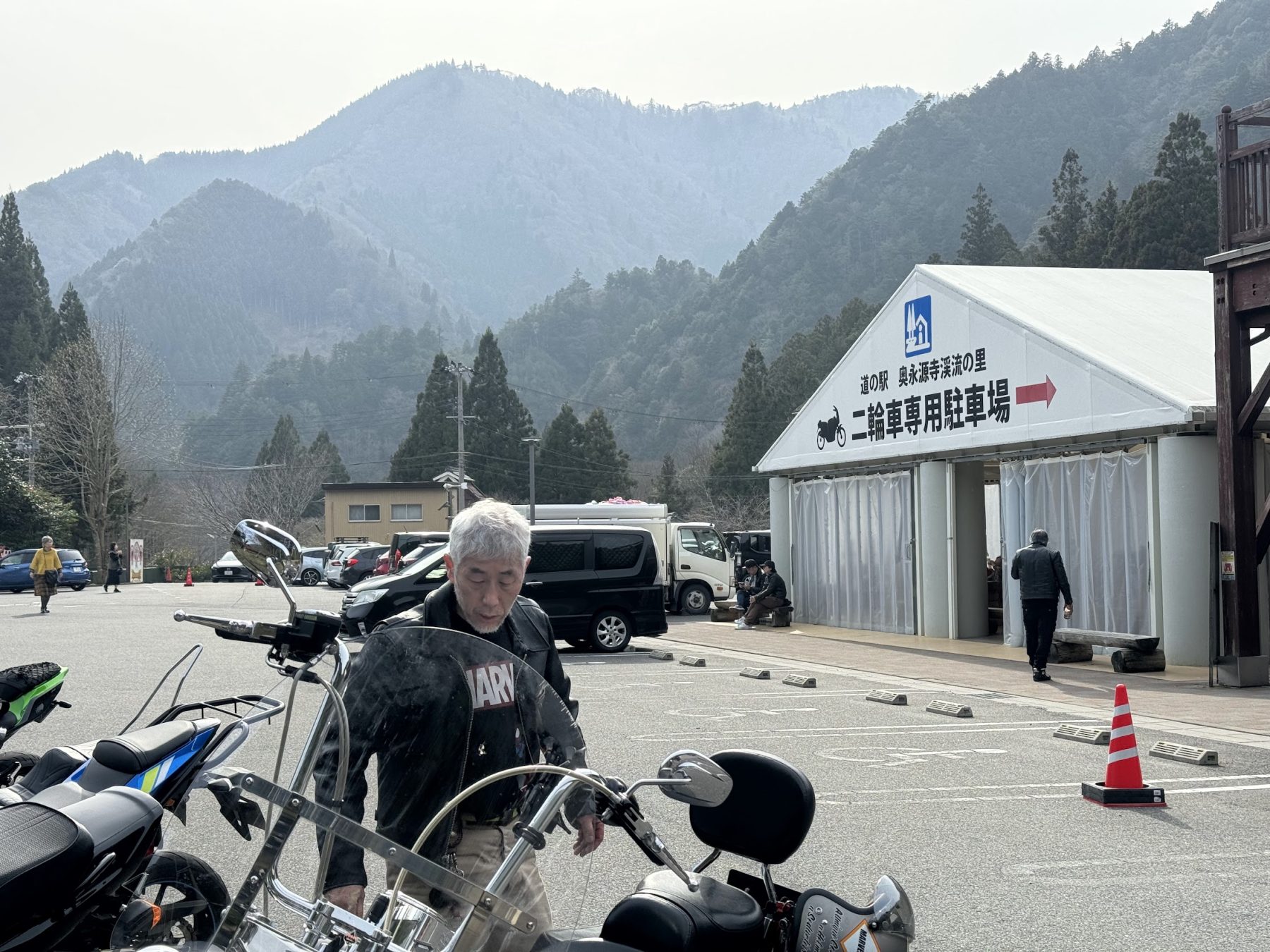
I followed the Seta/Uji river again to come out at Uji and finally made it to Rental819 in Kyoto. Incredible ride.
Costs to Ride in Japan
Thanks to a sharply depreciated Yen, riding in Japan is not as expensive as you might think. A friend of mine (and avid rider) recently told me a story about paying $250 for a taxi to the airport in Nagoya city in Japan in the 1990s. The days of those insane prices are thankfully over, and riding here can be done on a pretty tight budget especially considering how safe and well-developed Japan is.
Before I get in to my exact spending, I’ll give you some context for my ride. I wanted to try out the Yamaha CP2 engine, so I rented the XSR700. As I’ll get in to at the end of the article, this bike was overkill for Japan’s roads, and I spent quite a premium to ride it.
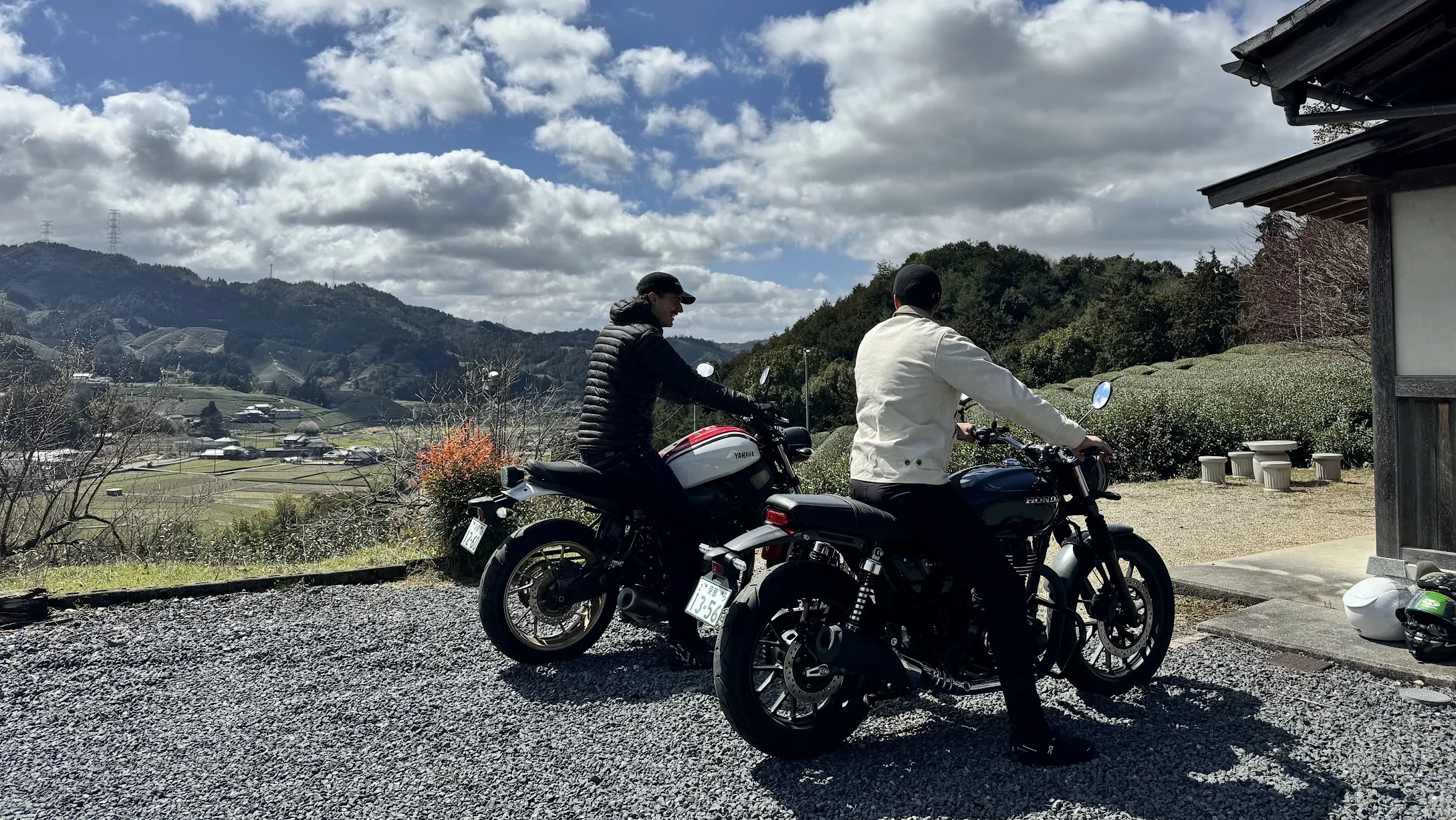
The rental agency I used, Rental819, has a fixed pricing model based on “classes” for bikes. The XSR700 I rented is a P4 class bike: this class is mostly 400-700cc bikes. I will probably rent a P3 (150-350cc) or P2 (125-150cc) bike for my next ride in Japan, which is significantly cheaper. You can search all of Rental819’s bikes across their entire fleet here.
I spent a total of 78,320 yen or $520 US dollars on the motorcycle rental for 5 days, including two rental full face helmets. Had I gone with a P3 class (say the classic-styled Honda GB350S) I would have spent 62,040 yen or $413 US dollars on the rental, over $100 saved. Had I gone with a fun pit bike like a Honda Monkey, I would have spent just 35,640 yen or $238 US dollars on the rental – a savings of over 50%.
Fuel is a dollar and change per liter in Japan right now, so I spent 7,587 yen or $51 US dollars on fuel for my entire trip. Unfortunately I forgot to track the KMs I rode! However, you can do the math… Prices were around 175 yen per liter, and the XSR700 get about 25 kilometers per liter.
As for the cost of food, hotels, and onsen soaks for my five days of riding…
Food in Japan is also surprisingly affordable – in Kyoto you can easily spend $200+ a head on fancy kaiseki meals, but your average bowl of udon or Japanese curry will go for about 1000 yen / $7. In total, I spent 28,400 yen / $189 on food over my 5 day ride. Had I eaten out of 7-11s and Family Marts (you’d be surprised how good this food is and how much variety is available) I’d probably have spent <$100 total.
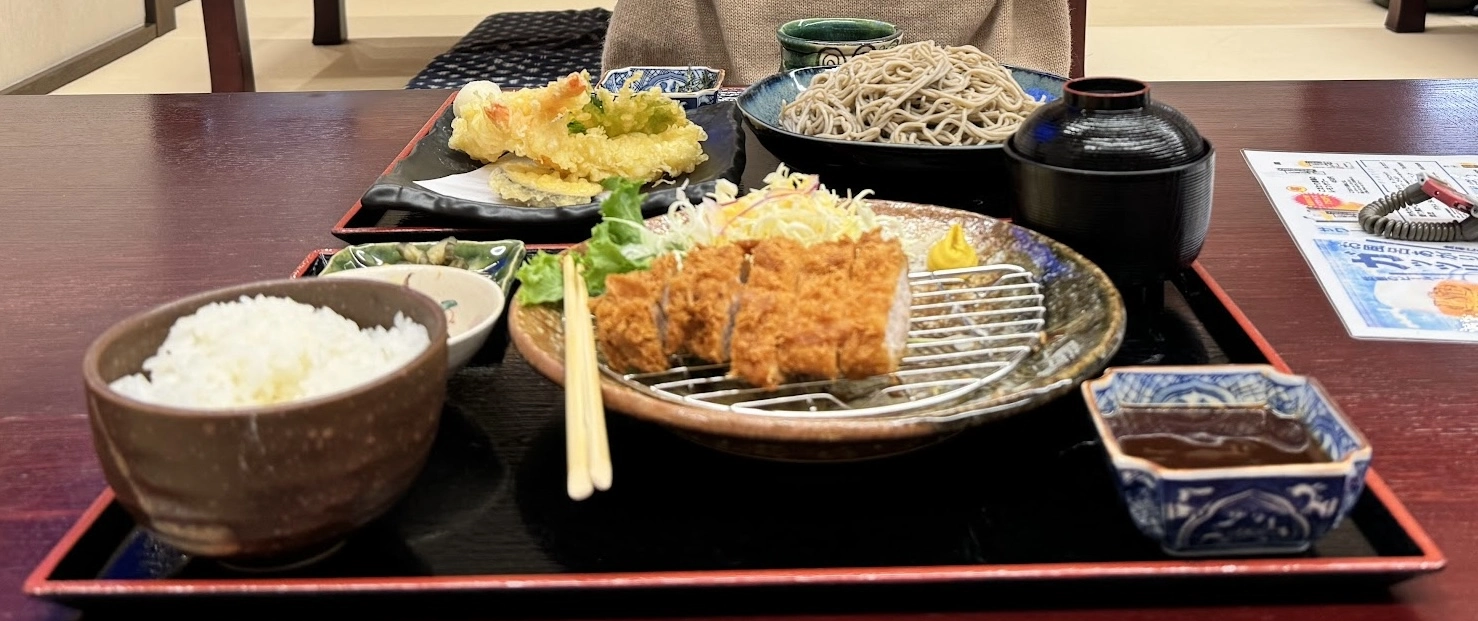
I went budget on the hotel, meaning I was looking for hotels around $50-$60 a night. Prices are high during late March and early April since this is Sakura (cherry blossom) season so it was slim pickings, but usually there are a decent amount of clean, well-serviced hotels in this price range even in major cities like Kyoto and Osaka. I spent a total of 42,000 yen / $280 on hotels for this ride.
My only other expense while riding was onsens, which I paid about 4,000 yen or $27 US dollars for, with three visits. These visits didn’t have any time limit, and they were well worth it for the relaxation after a long ride.
Here’s a full breakdown of my costs for 5 days of riding in Japan, for two people on one motorcycle.
| Item | Yen | Dollars (US) |
| Motorcycle Rental | ¥ 78,320 | $522 |
| Fuel | ¥ 7,587 | $51 |
| Hotel | ¥ 42,000 | $280 |
| Food | ¥ 28,400 | $189 |
| Onsen (3 visits) | ¥ 4,000 | $27 |
| Total Spent | ¥ 160,307 | $1,069 |
| Per Day | ¥ 32,061 | $214 |
Requirements to Ride in Japan
Here’s what you need to legally rent and ride a motorcycle in Japan as a foreigner:
- Driver’s license with motorcycle endorsement in your country
- International Driver’s Permit with motorcycle endorsement (available from AAA in the USA, or through your local government)
- Valid passport
Rental819 is very strict that you need all of these documents, in unexpired form. I doubt there’s a way around this in Japan.
Beyond that, I recommend you pack a rain suit no matter when you plan to ride. As an island country, rain comes all year around. It’s usually predictable, but especially when it’s cold, you don’t want to get caught far from your hotel in a cold downpour.
You’ll also want warm clothes in reserve, unless you’re riding in the dead of summer. I bought a set of Uniqlo HeatTech Ultra Warm leggings that saved me on the unexpectedly cold spring days of my ride.
If you’re interested in riding in Japan, you’ll want to hear about the Riding in Japan guide I’m working on in partnership with experienced riders in Japan.
My Next Ride in Japan
Given my experience this spring, there are a few things I’d change for my next ride in Japan. First, I’d rent a small CC bike. Unfortunately the traffic here is just too slow to fully enjoy a big bike. While I did see a lot of big bikes on the road, I only saw one other rider really pushing their bike (and he was on a 250). It seems bike culture in Japan might be more about the look than pushing the capabilities of man and machine.
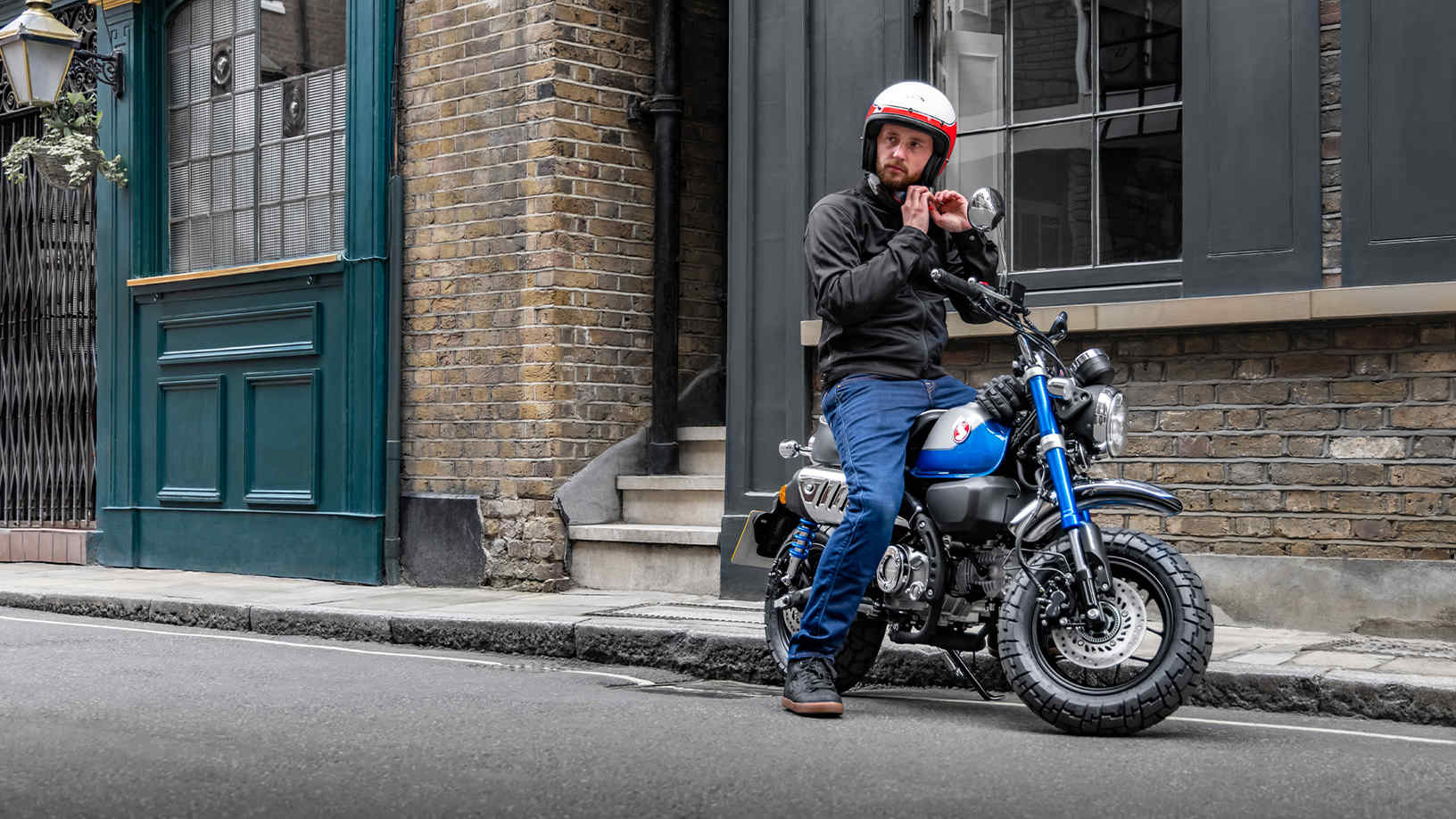
Second, I’d go later in the spring, in the summer or in the fall. While I went to Japan in 2023 over almost the exact same dates and got 75 F sunny days in Kyoto, this year was 40-50 F and rainy. That hindered my ability to ride all the routes I wanted to hit.
And next time, I will take my Sterling Pacific 80L check-in travel case.
That’s all I have for now; keep it twisted!
Want to share a ride report to tens of thousands of riders? Reach out to me at evan@itsbetterontheroad.com

Brendon
1 year ago
Hello,
When will your guide for Japan be available?
I am planning for a solo tour in Japan for 2025 for about 2 to 3 weeks of riding.
No specific route yet but I am thinking of flying in to Osaka and then do a big loop to Hiroshima and back to Osaka to return the bike. Maybe you could recommend a route or other cities to go instead.
Look forward to hear from you.
Thanks!
Evan Rally
1 year ago
I am working on it this week, but unfortunately I do not have a date yet for completion. I am actively looking for more partners to contribute routes and information. Your loop sounds good – I will look at the map and email you some spots that come to mind. Arima Onsen town is one I visited that I really enjoyed, which would be on that route.
Also, if you haven’t already please sign up on the Japan guide page to hear about it when it’s ready. I will give a big discount to anyone on that list.
Best,
Evan
Jay
1 year ago
Enjoyed your summary on bike rentals and riding in Japan. Hard to find any info or in depth guides for this country. Is it possible to rent motorcycles in Jan/Feb? Possibly in the southern(warmer) part of Japan? I’m planning on doing some snow skiing in Hokkaido and thought it would be awesome to bike ride in the same trip. Kind of a bucket list item to be able to ski and ride on the same trip. I look forward to reading your complete Japan guide once it’s finished. Happy trails.
Evan Rally
1 year ago
Yes, Japan is still a mystery! I think in the southern areas they’ll still rent a bike to you in Jan/Feb, but you should ask Rental819 just to be sure. That trip sounds incredible. Would love to ski in Hokkaido, bullet train to Osaka to stumble between yakitori, then finish the trip riding a motorcycle thru Kyushu. Thank you and enjoy your trip, Jay!